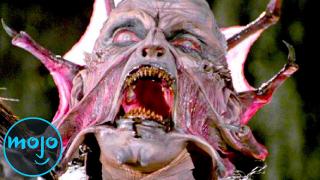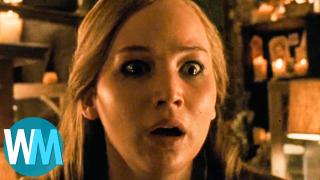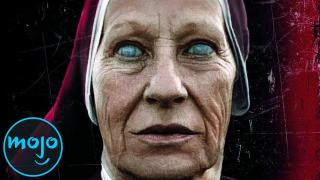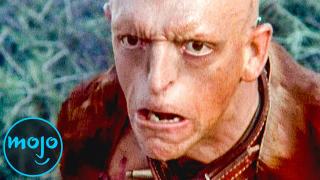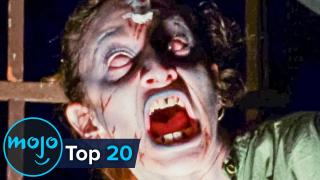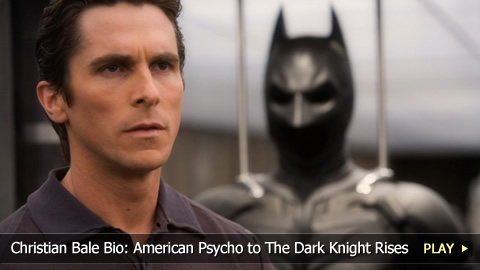Top 10 Controversial Horror Films
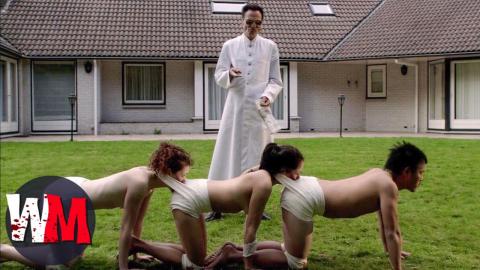
Whether it's because of their shocking and graphically violent content or the fact that their marketing strategies just went way too far, these horror films generated controversy along with their scares! WatchMojo presents the Top 10 Horror Films that Stirred the Pot! But what will take the top spot on our list?
Watch on WatchMojo: http://www.WatchMojo.com
Big thanks to jkellis for suggesting this idea, and to see how WatchMojo users voted, check out the suggest page here: http://www.WatchMojo.comsuggest/Top+Ten+Controversial+Horror+Films
#10: “The Blair Witch Project” (1999)
Top 5 Scariest Blair Witch Project Moments (Director Explains)
It’s one of the oldest tricks in the book: introduce a novel concept, hype the hell out of it, and watch the money roll in. This was partly the idea behind the little horror movie that could: 1999’s “The Blair Witch Project.” Combining viral marketing with the viewing public’s natural curiosity; “Blair Witch” did a great job mythologizing its plot, while also playing up the “is it real or fake” angle via some brilliant – albeit controversial – pre-release internet hype, like listing the actors as “missing” on IMDb. The fact that the shaky, handheld camerawork in this pioneering found-footage film left some viewers with motion sickness and others vomiting did little to lessen the controversy.
#9: “Snuff” (1976)
You just couldn’t make up the sort of “stranger than fiction” story behind this 1976 horror film. Producer Allan Shackleton distributed a gritty, but otherwise unassuming, film by the name of “Slaughter,” and decided that he wanted to cash in on the urban legend of snuff films by shooting a new ending where the movie crew murders a young actress on camera. Shackleton was said to have hired fake protestors to picket the film’s release, but the buzz around “Snuff” was so hot that soon real groups began earning the film tons of free exposure via their outrage. As a result, a movie that initially cost only $30,000 raked in a significant profit.
#8: “The Last House on the Left” (1972)
Top 10 Most Controversial Horror Movie Scenes of All Time
Writer/director Wes Craven was a virtual unknown when he and “Friday the 13th” producer Sean S. Cunningham unleashed this grim exploitation film on the world. “The Last House on the Left” was originally intended as a hardcore take on Ingmar Bergman’s “The Virgin Spring,” right down to its casting of triple X actors like Fred Lincoln. Craven eventually dropped the explicit sex angle, but this didn’t stop “The Last House on the Left” from achieving infamy as one of the genre’s most disturbing films. This is due mainly to the film’s creepy soundtrack, nihilistic tone, and, most memorably, the performance of David Hess as Krug, whose scenes of sexual assault remain shocking to this day.
#7: “The Human Centipede (First Sequence)” (2009)
Top 10 Worst Horror Movies of the Last Decade
One could argue that “Human Centipede” and “A Serbian Film” are examples of cinematic violence for the sake of violence, regardless of their respective filmmakers’ intended motives. At least, that’s the opinion held by the films’ detractors, who believed the imagery within both pictures was grounds for both censorship and outright banning. “The Human Centipede” in particular gained attention in the mainstream due to its outrageous premise: a mad scientist sews kidnapped victims, mouth-to-anus, to create a perverse new being. The film itself is actually quite tame compared to its two sequels, however, both of which make the OG “Human Centipede” appear positively neutered.
#6: “Martyrs” (2008)
“Martyrs” was released during a sort of renaissance period for extreme cinema in France, a movement that was labeled by critics as the “New French Extremity.” “Extreme” is certainly a fitting word to describe “Martyrs,” as writer/director Pascal Laugier managed to drain pretty much every last ounce of hope from his audience during the film’s 94 minute runtime. Critics and fans called “Martyrs”’ content salacious, with some labeling Laugier’s work as an example of the modern “torture porn” aesthetic. Regardless of where you stand, there’s no denying that “Martyrs” leaves no one unaffected once the final credits roll.
#5: “Cannibal Holocaust” (1980)
Depicting death onscreen is one thing, but it’s entirely different to be brought up on murder charges in a real-life court as a result of those film fatalities. That’s what happened to Italian director Ruggero Deodato, however, whose “Cannibal Holocaust” is one of the most controversial films ever made. Deodato and his crew filmed un-simulated animal deaths for “Cannibal Holocaust,” and set up some very realistic shots of the main cast being viciously killed and eaten. In fact, these scenes were so realistic that Deodato was forced to get his actors – who had agreed to temporary disappearance clauses in their contracts – to be interviewed on Italian TV to prove to the courts they were still alive!
#4: “I Spit on Your Grave” [aka “Day of the Woman”] (1978)
Top 10 Horror Movies So BAD They Were Pulled From Theatres
“I Spit on Your Grave” was a film born in the 1970s grindhouse era. It ended up thriving on ‘80s home video, largely thanks to its intensely controversial reputation. Camille Keaton stars as Jennifer Hills, a writer whose idyllic vacation in the country results in assault, degradation, and gang rape at the hands of local thugs. The film ultimately gave rise to the “rape-and-revenge” genre, as the second half of “I Spit on Your Grave” focuses on Keaton’s bloody and gruesome retribution against her tormentors. But the basic fact of the matter is: anything with this much violence, nudity and obscenity is going to elicit controversy – plain and simple.
#3: “The Texas Chain Saw Massacre” (1974)
Top 10 Terrifying Horror Movie Families
This film has somehow entered the public consciousness as one of the goriest films of all time, despite being quite restrained when it comes to bloodletting. This perhaps speaks largely to how successful writer/director Tobe Hooper’s masterpiece was at getting under the skin of its audience. Fans collectively recall how tense and atmospheric TCM was, and how effective Hooper’s location, production design, and cinematography are in creating a universe of absolute decay and dread. The fact that it was all touted as supposedly true only added to the controversy. In their day, “The Texas Chain Saw Massacre” was outright banned in several countries – but today, it’s an icon of horror cinema.
#2: “The Exorcist” (1973)
Top 20 Scariest Banned Horror Movies
It’s unlikely that modern movie audiences would ever run from their seats or pass out from terror, even for the scariest films. This wasn’t the case back in 1973, however, as evidenced by the response to William Friedkin’s towering horror classic, “The Exorcist.” The ‘60s and ‘70s were a golden age for occult themed horror films, and audiences flocked to see them in droves. But in the case of this William Peter Blatty adaptation, it wasn’t just the shocking imagery – religious, violent, disgusting or otherwise – that got to audiences: it was the so-called subliminal messaging, as well. But hey, it was the first horror film nominated for a Best Picture Oscar, so it can’t be all bad.
#1: “Psycho” (1960)
Christian Bale Bio: From American Psycho to The Dark Knight Rises
Alfred Hitchcock was already a master of suspense when he released “Psycho” in 1960, but his film also opened the floodgates for something a bit more visceral than mere suspense: onscreen violence. It’s easy to forget how envelope-pushing and controversial “Psycho” was over fifty years ago with its iconic shower scene. The stabbing strings of Bernard Herrmann’s score accentuated the puncturing of actress Janet Leigh as she’s murdered in the most vulnerable place of all: the shower. Add to this the depiction of Leigh’s onscreen sexuality, as well as the decaying corpse of Norman’s mother, and you have a recipe for one of the most controversial horror films of its day.

 1
1
 1
1
 report
report
 1
1
 1
1
 flagged
flagged

